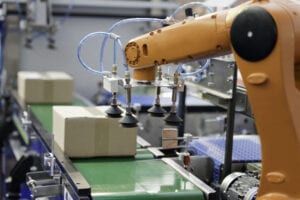The 4th Industrial revolution is taking hold. Technology start-ups are disrupting traditional business models. We are living in a VUCA world where technology is evolving by the second, smartphones are making information available anytime, anyplace; social media is impacting and changing consumer behaviors by the second. And being digital today no longer means digitizing processes; it is now a measure of how well an organization is adapting to the disruptive and rapidly changing digital landscape.
Supply chains are one of the most impacted by this rapidly changing scenario. The VUCA world is amplifying the volatility and is pushing companies to be agile. The higher the volatility, the higher the risk. This poses a unique opportunity for organizations to restructure their supply chains to be a differentiator, and be enabler for the business. Companies which have been able to adapt their supply chain to this scenario are the ones who are creating unique value propositions.
An interesting aspect of every supply chain is the upstream process which involves sourcing from vendor base spread across geographies. As per bullwhip effect, the upstream supply chain faces the amplified effect of all the fluctuations downstream. The digital maturity is diverse across the chain and coupled to it is the fact that upstream information systems are standalone, non-integrated with many layers of manual interventions, making information fragmented, static and not accessible.
But today, the emerging technologies are blurring the lines between stakeholders in upstream supply chain by bringing in transparency and access to real time information.
Procurement Organizations are today charting the transition from descriptive to diagnostic to predictive analytics. Cognitive computing algorithms are sniffing out patterns to predict upstream supply risks and mitigate them. Robotic process automation is driving automation of transactional side of procure to pay process, freeing up time of procurement professional to focus on core strategic activities. Blockchain technology is rapidly redefining the way traditional payment transactions are managed and are redefining the way conventional transactions are done. Procurement bots are taking over the repetitive activities in the procure to pay process bringing in a lot of standardization and efficiency.
As per research by PwC, smart technologies and algorithms today, allow very large volumes of data from many heterogeneous sources to be aggregated, processed, and analyzed. The resulting analyses can be used to understand suppliers, markets, and customers; predict market trends; and look into machine and product failures at supplier end; driving procurement decisions. Digital technologies are helping to increase collaboration, and engagement using a wide gamut of tools along the entire procurement value chain; from planning and sourcing to contract negotiations, order delivery, payment, and supplier management.
We at Schneider are focused on creating a tailored, connected and sustainable supply chain. We are today, looking at our procurement processes closely to identify the most impacting use cases for deployment of some of the emerging technologies. With a supplier network spread across 120+ countries, we are working on big data analytics as well as data aggregation and curation. Parallely, we are also working on digitizing the fundamental procurement processes as per the Schneider’s Procurement Excellence System (PES) to create a strong foundations for the new technologies. While we are focused on building strong strategic partnerships with our suppliers, we are also helping our suppliers embrace digital wave through the Schneider Supplier Portal. Digitizing the upstream supplier network is a challenging task which we have taken as our mission.
With real time technology problems to solve, Life is definitely ON at Schneider Electric!

